AZZA Silentium Case Review: Knowing the Limits
by Dustin Sklavos on January 29, 2013 12:01 AM EST- Posted in
- Cases/Cooling/PSUs
- quiet
- AZZA
Noise and Thermal Testing, Stock
Given the way AZZA designed the Silentium, its performance under stock settings is really going to be what we're interested in. This is not an enthusiast-class case, and the bog standard ATX cooling system is clearly not intended to handle high-performance builds. Unlike many other cases designed for silent running, AZZA barely even makes allowances for performance.
What we're really going to want to see is just how the stock fans perform. There's no fan controller included and both fans use a standard molex connector. They're also both 120mm fans when the industry is beginning to graduate to 140mm, so they may not be able to move much air.
I've added another unfortunate wrinkle into the mix, though: I've added the test results from the Nanoxia Deep Silence 1 and the Fractal Design Define R4. The R4 is about $10 more than the Silentium and a much more flexible enclosure, while the DS1 is expected to arrive on US shores at around $119. If it does, and that's a big "if," it's going to seriously jeopardize the value propositions of a lot of the cases here, including the Silentium.
Ambient temperature during testing was ~22C.
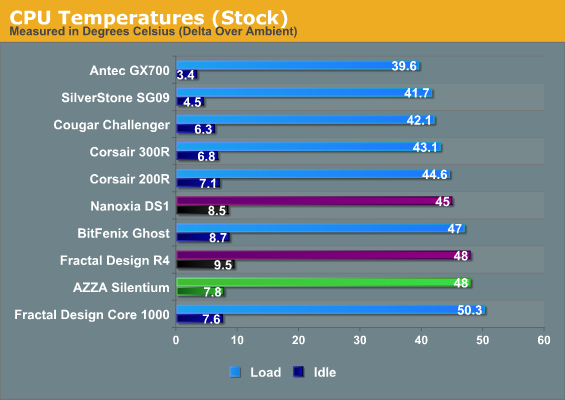
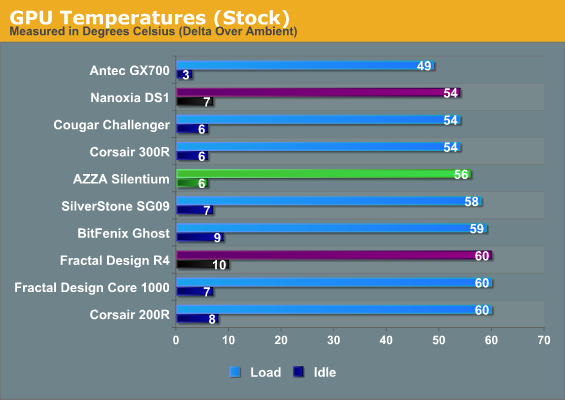
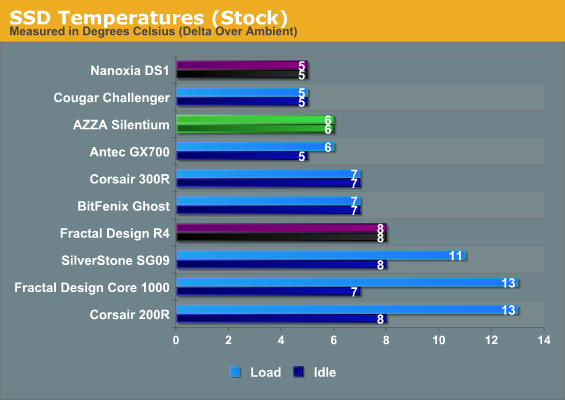
Thermals at stock aren't particularly impressive, and the Silentium is really competing with the BitFenix Ghost at its price point. The Define R4 was never a stellar performer, but it's flexible if you're willing to play with it. It's also much better built than the Silentium.
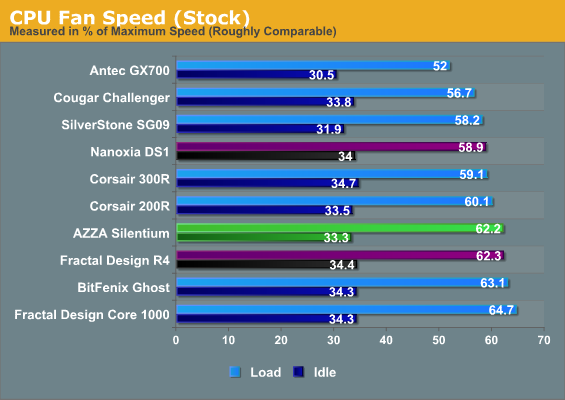
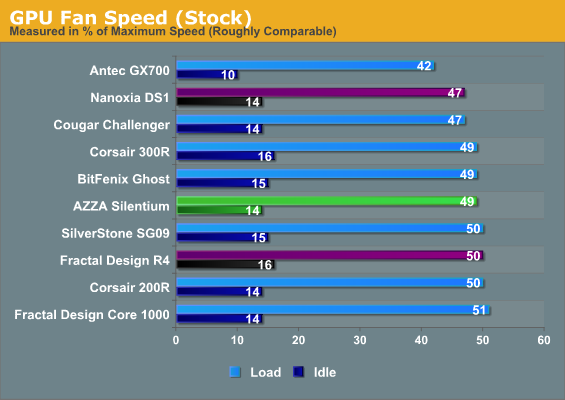
CPU and GPU fan speeds prove the Silentium, Ghost, and R4 are pretty much neck and neck with each other while Nanoxia's enclosure provides better value across the board.

AZZA is able to put a little bit of distance between itself and the competition in our acoustic testing, though. They use thicker dampening material and more of it than the competing cases do, and it shows. That said, the DS1 is still quieter while offering better thermals and airflow.










22 Comments
View All Comments
The Von Matrices - Tuesday, January 29, 2013 - link
Are all the pictures broken or has my browser gone crazy?csroc - Tuesday, January 29, 2013 - link
broken for me too unfortunatelykarasaj - Tuesday, January 29, 2013 - link
happened to me too, so I doubt it.colinstu - Tuesday, January 29, 2013 - link
kinda pointless without the pictures!Dustin Sklavos - Tuesday, January 29, 2013 - link
Our server was hosed, should be up with pictures now.pcfxer - Tuesday, January 29, 2013 - link
What? No platter drives? I'm still trying to find a high quality "silent" case that is sharp, has more than just silicone drive mounts and isn't the SOLO or SOLO II.jimmyzaas - Tuesday, January 29, 2013 - link
Exactly, there should at least be one hard disk in there. I personally know many people have at least one hdd in their system. Just because they want it quiet, does not mean they want to sacrifice storage capacity. It's a shame no one else is doing suspension mounts like the Solo.Temps of SSDs are kinda silly. They don't even get that hot anyway. HDD temps would have been a better measure of storage cooling, which often gets neglected in these quiet cases.
hmaarrfk - Tuesday, January 29, 2013 - link
Seriously :|, how is only having a 1 USB 3.0 port at the front allowed for a case that cost $100. The review should have stopped there and declared the case as a "do not buy".ShieTar - Tuesday, January 29, 2013 - link
Why? Personally, I have yet to find a usefull application for even a single USB 3 port, as I don't transport data on physical media but rather just through network connections. And nothing else I connect to USB, like keyboard, mouse, printer, WLAN-Stick utilizes USB 3. Or needs to be connected to the front of the case.I also buitl 4 PCs for friends and colleagues the last year, and none of them had any USB-3 devices beyond external harddrives, and nobody ever mentioned he wants to connect two of those at the same time. So, I don't think a lot of people have any kind of interest in a second front USB-3 port.
As an engineer I can understand the annoyance with an odd number of case-ports given the fact that Mainboard-Connecters are always provided for pairs of ports, but still I would guess that for at least 80% of potential customers this fact is completely irrelevant.
Hrel - Tuesday, January 29, 2013 - link
I transfer data from one external to another, via USB 3.0. 2 Ports is a bare minimum.